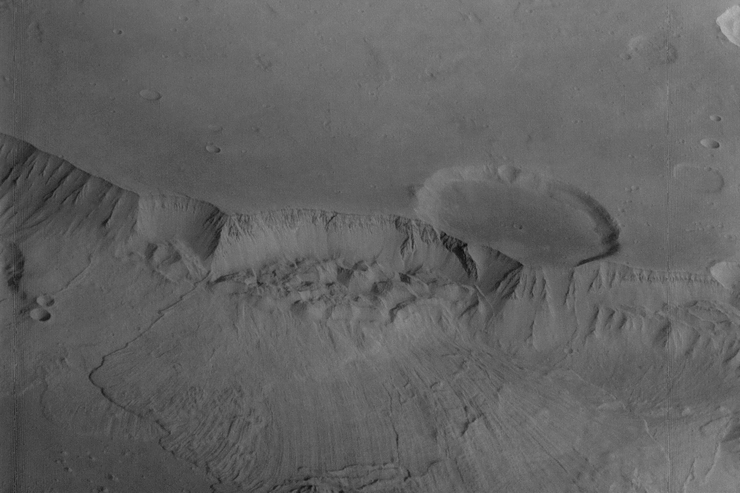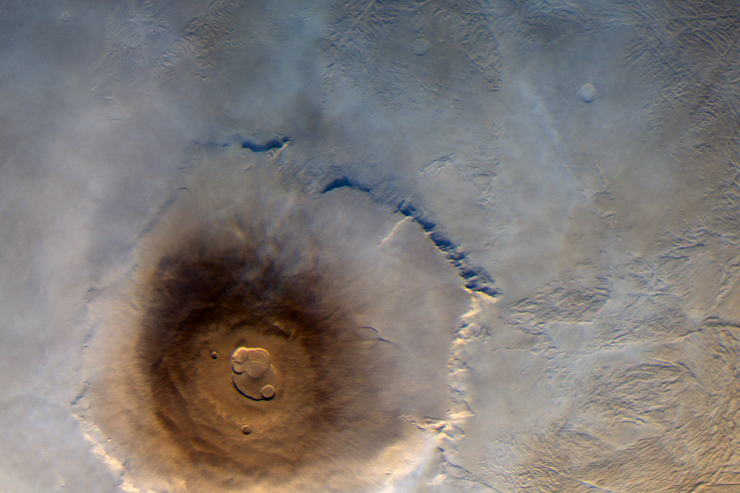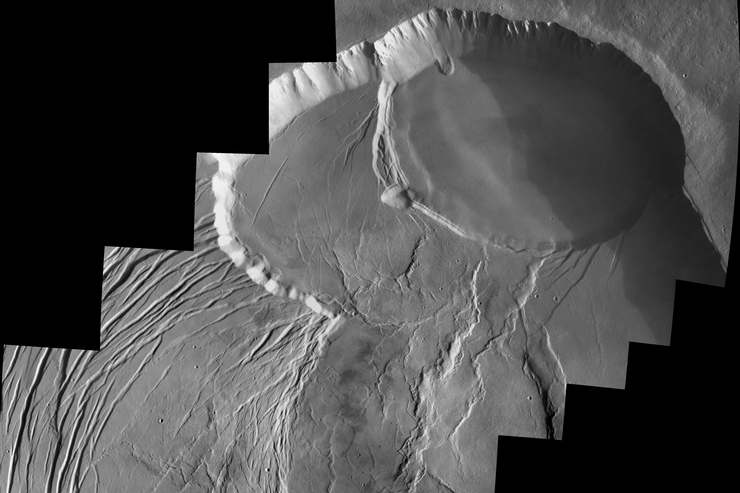Although Valles Marineris originated as a tectonic structure, it has been modified by other processes. This image shows a close-up view of a landslide at the 5 km high south wall of Ganges Chasma.
The unnamed impact crater on the plateau, which is a part of Aurorae Planum, is approximately 27 km in diameter. The floor of the crater is smooth and flat, so it seems likely that the interior of this crater has been partly filled with basalts or with sand and dust blown by wind. The landslide partially removed the rim of the crater. The debris apron appears to have formed by collapse of the slump blocks at the base of the wall and extends about 40 kilometers across the floor of Ganges Chasma.
The landslides in Valles Marineris generally show few meteorite impact craters, and so are quite young; they probably formed in the Amazonian Epoch of Mars’ history, some 1.8 billion years ago.
Viking 1 Orbiter image f014a30, taken on July 4, 1976.
The image covers a length of approximately 60 kilometers.
(Image Credit: NASA/JPL/Arizona State University/astroarts.org)



